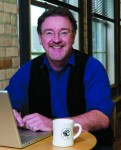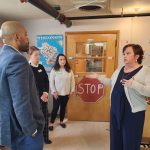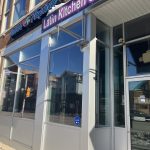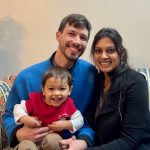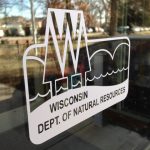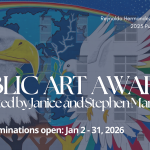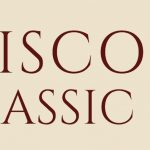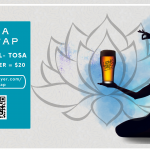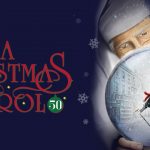Telling ourselves stories
Alternative medicine has opened up many new avenues by which we can effect our own healing. Nancy Mellon, a psychotherapist, storyteller and artist, has written a book that won the 2008 US Books’ Best Books Award in the field of alternative medicine: Body Eloquence: The Power of Myth and Story to Awaken the Body’s Energies. As a pioneer in therapeutic storytelling, Nancy teaches worldwide, inspiring deep listening and new perspectives on the physical body, hoping to facilitate healing through spontaneous and traditional stories.
I was happy to have the opportunity to interview her for the Exchange.
LB Storytelling in our time is usually thought of as entertainment — something to distract us from what ails us. You are taking it further, using stories and the spoken word like medicine or healthy food.
NM Communicating with the heart and soul has always nourished the speaker as well as the listener. Historically, families and communities would gather and tell stories to pass down wisdom and support culture. In our time, there is a hunger for nourishment through the spoken word that can’t be met through texting and videos. The storyteller and listener within us wants to communicate with the whole person — heart, mind, body, soul, spirit — everything weaving together.
LB Your newest book, Body Eloquence, shows how stories influence the wellbeing of the major organs of our body. Can we really impact our health and the health of those we serve in our professions through storytelling?
Scientific experiments show that when a plant is assaulted with negative and irregular vibrations, it will fail to grow and thrive. We forget such vibrations affect human beings, too.
Words have vibrations, especially when they are spoken aloud. Images have vibrations; plot structures in stories hold vibrational patterns. Everything that lives has subtle vibrations and resonances. A drummer knows that some rhythms reach the heart and some address the breathing; others are more sensual and sexual; and others are more thought provoking.
In the body, every organ emits its own different rhythmic frequencies and tones, and musicians and storytellers have always tuned in with more or less intention to these different frequencies in order to communicate with their listeners.
LB How did you come to this realization?
NM Like many Americans, I rarely heard poetry recited when I was growing up. When I began to teach, speaking poetry was a profound experience for me. I didn’t grow up with storytelling either, but as a Waldorf teacher in my 30s, I began to tell stories every day in the classroom. I love stories and poetry that are open to life’s mysteries and that make us aware of the truth, beauty and goodness that can arise in even the darkest plotlines.
LB In your work as a psychotherapist, how do you help your clients through storytelling?
NM All healing is creative activity, and artistic creativity supports the healing process. As a psychotherapist, I encourage clients to work with a creative process, whether painting, drawing, dance-movement, furniture building, sculpting clay. Creating and re-creating a story can be an especially powerful catalyst for transformation.
LB Yours is such an interdisciplinary approach. Your book, too, draws on many modalities and traditions as it reveals the gifts and challenges of the various organs of the body. Many people look to specialists in their healing process. Are you intentionally working to counter that tendency?
NM In my experience, when people have aches and pains on a physical level, there often is a cause that has another origin, perhaps an emotional or thought process that has gotten stuck. There are multitudes of examples of that. If we’re just looking at physical symptoms, it’s a very narrow band of awareness.
When I was a college student, majoring in one subject seemed to me a distortion of the learning process. As an educator, I have always recognized that every subject is connected with every other subject. I truly believe that the body is speaking with urgent eloquence now, to awaken us to its generative wisdom. Body Eloquence is my salute to the unity within the vast diversity of all things.
LB Many readers of the Exchange are very conscientious about nutrition and healthy lifestyles. What can you offer through storytelling to support people in their efforts to eat well and be well?
NM A good story can be a cleansing bath. It can soak out some of the toxic themes and bring them to the surface so they can be seen and transformed. Listening to great stories spoken aloud can be a sumptuous feast. Our whole being takes in the deliciousness of the spoken word that is not canned, electrocuted, or full of lies and deception. When words are spoken with a deep love for the truth, the body, soul and mind are nourished. Like healthy streams of nutrition, words can be spicy, sweet or sour. They can enliven the whole taste for life, for beauty, adventure, love, courage.
LB You’re going to be the keynote presenter at a conference in Milwaukee in March (Nurturing Resilience: The Power of Storytelling to Build Healthier Bodies and Communities). Can you give us a hint at what you will bring to that gathering?
NM Stories can reach right down into the physiological and psychological dynamics that create courage and fear, right down into the kidneys and guts. They can help to build the whole immune system. Myth and story can help us go through the darker aspects of life and encourage us to do the good whether we’re feeling hopeful or not.
LB You’ve been called a visionary. What do you think is the future of wellness?
NM What lives behind the words that we speak about ourselves and that we hear spoken — the intention, the integrity, why and how they’re spoken — daily affect our sense of well being. Important new medical disciplines of narrative medicine and energy psychology recognize this. Are you familiar with Masaru Emoto, the Japanese researcher and his book The Message from Water? We human beings are made of at least 70 percent water. Words can poison our inner water very quickly, and words can also bless us and build us up. Every word affects us one way or another.
Candace Pert, in her book, Molecule of Emotion, discusses what happens on the cellular level as we listen. Every cell of the body is a memory keeper as well as being responsive to emotion and thought. If a child has been frightened, he or she can continue to feel stress until the experience has been spoken of with loving confidence, affirming the ability to recover balance and learn and grow from the event.
LB What about children and storytelling? In our present-day culture, children are more likely to watch 100 videos before they hear one story told by heart.
NM The storytelling renaissance worldwide is a counter balance for electronic communication. Developing storytelling as a household art is an opportunity for parents to nurture the resilience of their whole family in the midst of electronic realities.
LB And our children are going to be the adults of the future. How can they become cultural leaders, thought leaders?
NM Every child must grow in heart, liver, lungs, in digestive capacity. Every child must grow a skin and immune system. Each child must grow into responsible sexuality, and have the freedom to imagine themselves as adults contributing with their whole being to the life of the earth. I believe that superb storytelling is the birthright of present-day children. It allows them to express their dreams and visions. It encourages them to inherit the cultural riches pertinent to their own soul’s mission. Without imagination, children are simply at the mercy of other people’s images and agendas.
LB I like the idea of children growing up to be adults who can think for themselves and think creatively, imaginatively. But how do all these individuals live together harmoniously and how can storytelling help us build community?
NM The body holds the framework and energetic patterns for understanding how to live together. Each organ formed over eons of time, and is a palimpsest of human earthly and cosmic evolution. I believe that as we recognize our heart, our liver, our lungs, and all these physical/ spiritual formations as teachers, they will lead us towards our full potential as a human community. The harmony of the human body is a neglected prototype for personal and communal evolution.
For more information about
Nancy Mellon and her work,
see her web site and for more information about the coming conference, click here.

